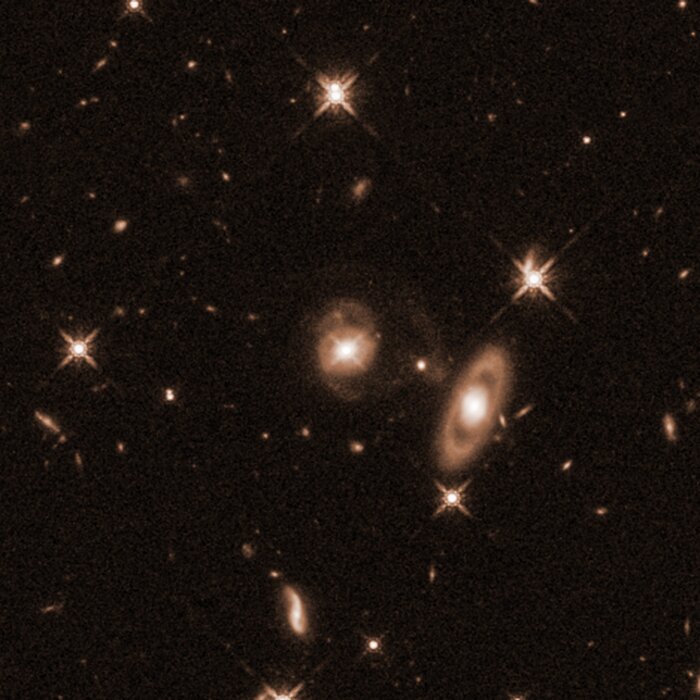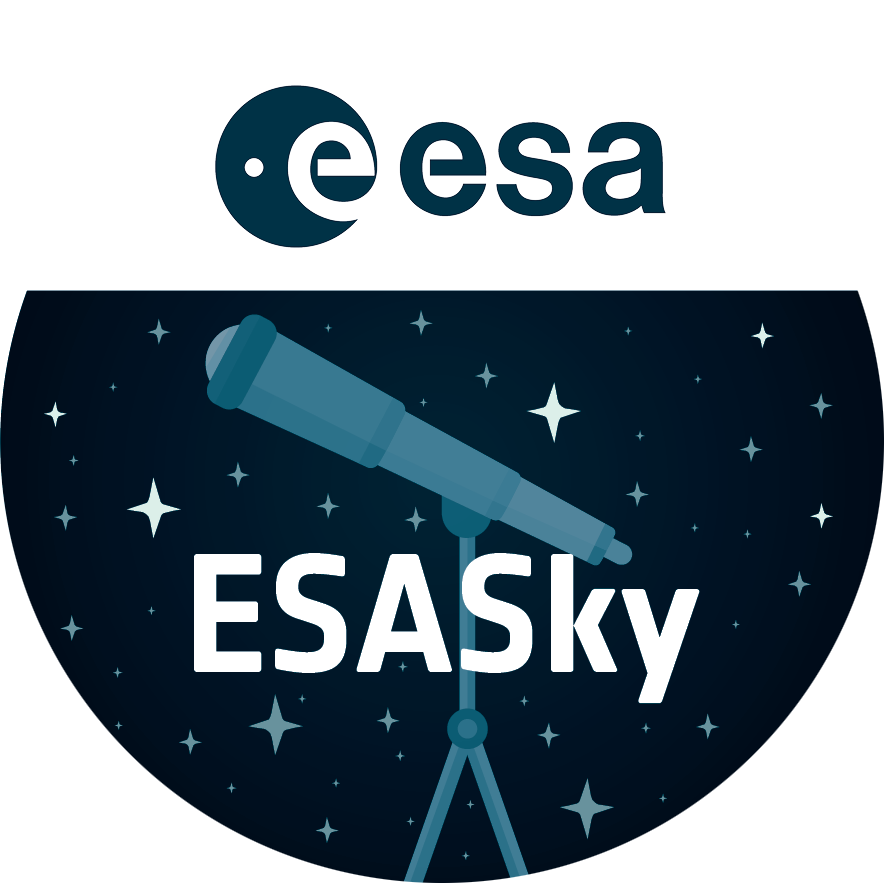Quasar J0742+2704
Quasar J0742+2704 (center) became the subject of astronomers’ interest after it was discovered to have a newborn jet blasting from the disk around its supermassive black hole in 2020, using the Karl G. Jansky Very Large Array (VLA) radio observatory. This led to follow-up with other observatories in an effort to determine the properties of the galaxy and what may have triggered the jet.
While the jet itself cannot be seen in this NASA/ESA Hubble Space Telescope infrared-light image, the spiral shape of J0742+2704 is clear, with faint but detectable arms branching above and below the galaxy center. This was a big surprise to the research team, as quasars hosting jets are typically elliptical-shaped, and it is suspected that messy mergers with other galaxies are what funnel gas toward the black hole and fuel jets. These mergers would also disrupt any spiral formation a galaxy may have had before mixing its contents with another galaxy.
Though its intact spiral shape means it has not experienced a major merger, Hubble does show evidence that its lower arm has been disrupted, possibly by the tidal forces of interaction with another galaxy. This could mean that jets can be triggered by a far less involved, dramatic interaction of galaxies than a full merger. The large galaxy to the lower right of the quasar appears to be a ring galaxy, another sign of interaction. Ring galaxies form after a small galaxy passes through the center of a larger galaxy, reconfiguring its gas and dust.
The brightest parts of this image — foreground stars and the bright center of the quasar — show the characteristic “starry” spikes produced by Hubble (and other telescopes’) interior structure. They are not actual aspects of the cosmic objects
[Image description: Field of yellow galaxies of various sizes and distances on a black background. Two larger galaxies are prominent. Centered is a galaxy with a bright core and faint spiral arms coming off its top and bottom. To the lower right of the spiral is a ring galaxy with an apparent gap between its bright core and the ring oval of dust and gas surrounding it.]
Credit:NASA, ESA, K. Nyland (United States Naval Research Laboratory), J. DePasquale (STScI)
About the Image
About the Object
| Name: | 2MASS J07424841+2704123 |
|---|---|
| Constellation: | Gemini |
| Category: | Quasars and Black Holes |
Wallpapers
Coordinates
| Position (RA): | 7 42 48.43 |
|---|---|
| Position (Dec): | 27° 4' 12.22" |
| Field of view: | 1.00 x 1.00 arcminutes |
| Orientation: | North is 145.5° right of vertical |
Colours & filters
| Band | Wavelength | Telescope |
|---|---|---|
| Infrared JH | 1.4 μm |
Hubble Space Telescope
WFC3 |


